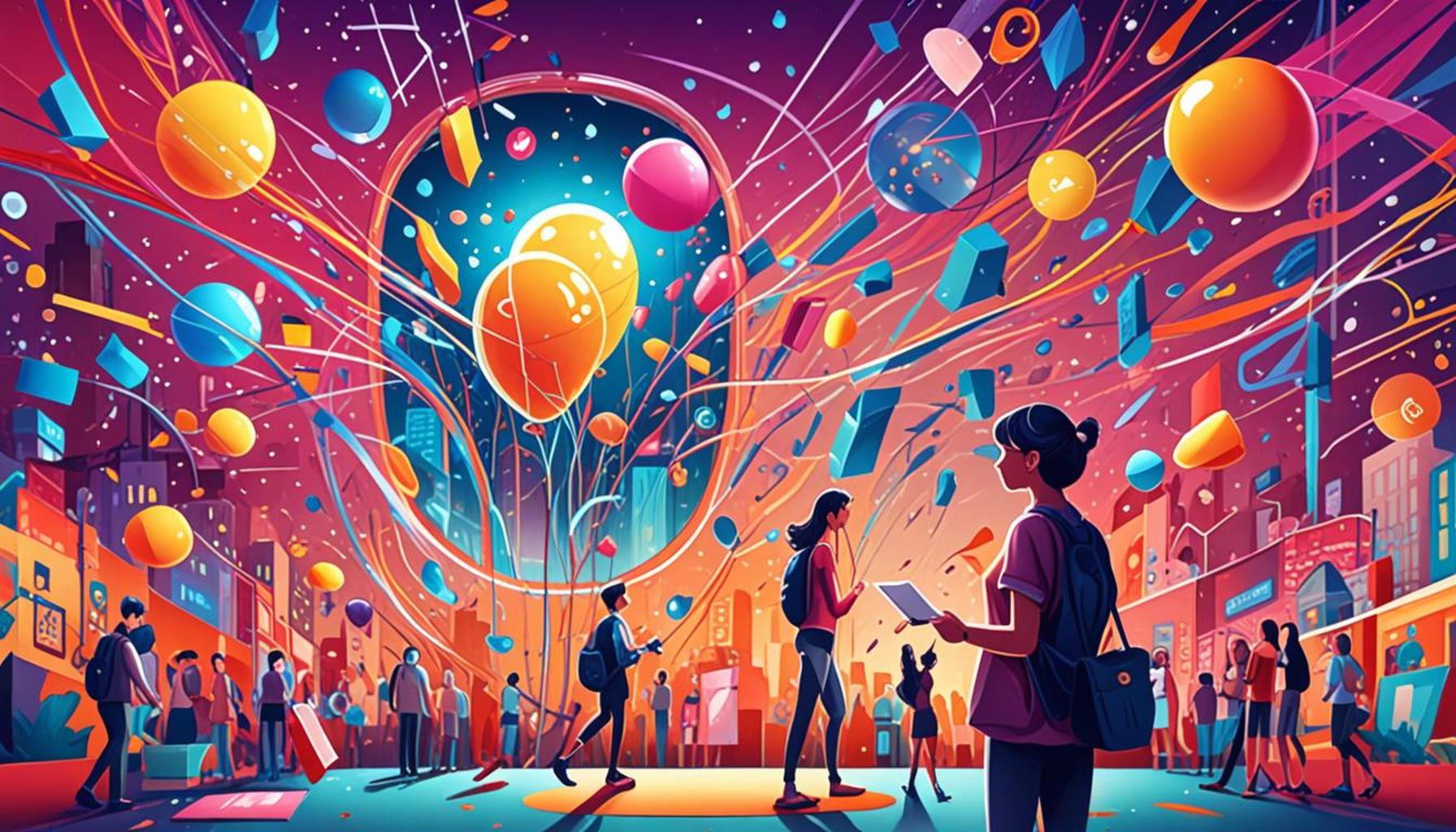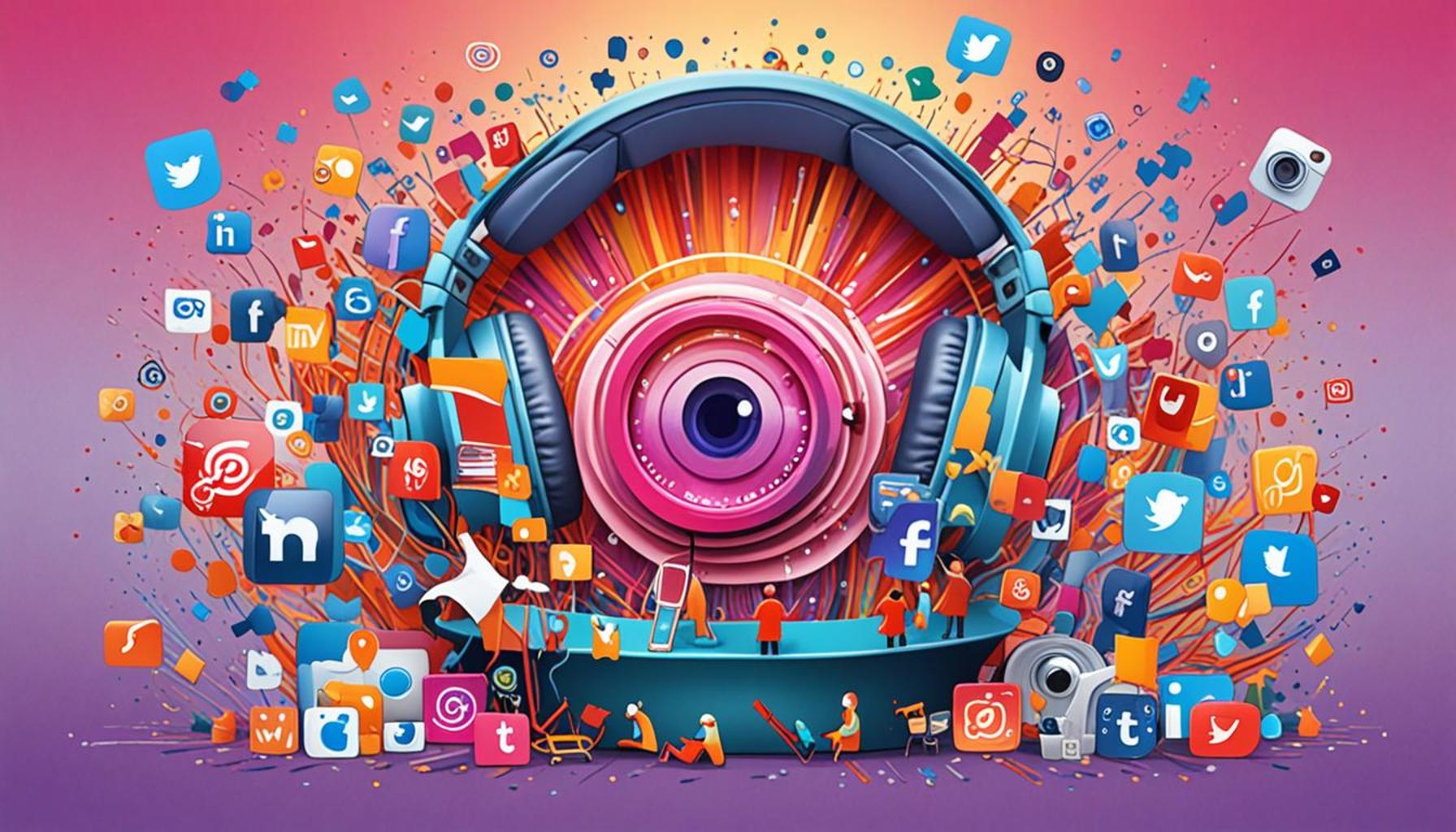The Importance of Personalization in Audience Interaction

The Impact of Personalization on Audience Engagement
In today’s fast-paced digital landscape, the ability to connect with audiences on a personal level has become a game changer. Personalization fosters engagement, loyalty, and drives interaction, making it an essential strategy for brands and content creators alike. When audiences feel valued and understood, they are more likely to respond positively.
Enhancing User Experience
One of the primary benefits of personalization is the enhanced user experience. Brands that tailor their content to meet individual preferences and needs provide a more relevant and enjoyable experience for users. For instance, consider Netflix, which utilizes sophisticated algorithms to recommend films and television shows based on a viewer’s past behavior. This not only makes it easy for users to discover content they are likely to enjoy but also keeps them engaged on the platform longer.
Boosting Engagement Levels
Another significant advantage of personalization is the increased engagement it fosters. Customized communication encourages more active participation. Businesses that leverage personalized emails, for example, often experience higher open and click-through rates compared to generic campaigns. According to a study by Experian, personalized emails deliver six times higher transaction rates than non-personalized emails. This effectively highlights that when audiences feel that messages are tailored specifically for them, they are more likely to respond actively.
Cultivating Stronger Brand Loyalty
Furthermore, personalization can lead to stronger brand loyalty. When audiences feel recognized and valued, they are more inclined to return to a brand. Take Starbucks, for example; their mobile app offers personalized rewards based on previous purchases, enticing customers to return for both new and familiar beverages. This strategy emphasizes not only customer engagement but also reinforces a loyal customer base eager to participate in their loyalty program.
The Numbers Behind Personalization
Moreover, recent studies show that personalized marketing increases conversion rates by as much as 10%. This statistic alone underscores the necessity for businesses to adapt their approaches to capture and nurture relationships with their audience. In a world where consumers are bombarded with information, standing out through personalization is no longer a luxury, but a necessity for success. For example, personalized recommendations on e-commerce sites like Amazon can lead consumers to discover new products they may not have found otherwise, driving higher sales.
Real-Life Applications and Strategies
As we delve deeper into this topic, we will explore successful examples and impactful strategies that illustrate the transformative power of personalization. Understanding these elements could be the key to unlocking a more dynamic and effective interaction with your audience. Companies leveraging data and analytics to create personalized experiences better resonate with their audience, ensuring they aren’t just another brand in a crowded market. This ongoing evolution is vital for brands eager to establish meaningful relationships with their consumers.
ADDITIONAL INSIGHTS: Expand your understanding here
Understanding the Mechanisms of Personalization
As we further explore the importance of personalization in audience interaction, it’s crucial to understand the underlying mechanisms driving its effectiveness. Personalization is not merely a surface-level change to marketing strategy; it represents a fundamental shift in how brands perceive and respond to their consumers. By leveraging data and technology, companies can create highly tailored experiences that resonate deeply with individual preferences.
The Role of Data Analytics
At the heart of personalization lies data analytics. This involves gathering vast amounts of information about customer behavior, preferences, and interactions across various platforms. By analyzing this data, brands can identify trends and patterns, enabling them to create highly customized content. For instance, data collected from website visits, shopping cart activity, and previous purchases allows companies to forecast what products might interest a customer, thereby streamlining the buying process.
Segmenting Audiences Effectively
Effective personalization also hinges on the ability to segment audiences. Distinct groups based on demographics, behaviors, or engagement levels allow brands to tailor their messaging to specific market segments. Some critical audience segments that can benefit from personalized interactions include:
- New Customers: Targeted welcome messages and introductory offers can create a lasting first impression.
- Repeat Customers: Personalized recommendations based on previous purchases foster a sense of familiarity and appreciation.
- Loyal Customers: Exclusive offers or rewards incentivize continued engagement and cultivate strong brand affinity.
These targeted approaches ensure that the content delivered is relevant and engaging, making it more likely that customers will take action, whether that’s making a purchase, signing up for a newsletter, or engaging on social media.
Utilizing Behavioral Insights
Behavioral insights also play a pivotal role in shaping personalized interactions. Understanding the context of a customer’s journey allows brands to offer timely and relevant messaging. For instance, a user who frequently browses sports gear but hasn’t made a purchase might receive a tailored ad showcasing a limited-time sale on their favorite items. Such insights not only enhance the interaction but also serve to acknowledge and validate the customer’s interests.
In addition, providing value through useful content or resources, like personalized blog articles, tutorials, or product suggestions based on specific interests, deepens the relationship between the brand and the consumer. This method positions the brand as a trusted resource, rather than just a faceless entity vying for attention, ultimately enhancing the overall audience experience.
Harnessing Technology
Finally, the rapid advancement of technology has provided brands with tools to harness and implement personalized strategies seamlessly. Technologies such as AI and machine learning allow businesses to refine their personalization tactics by continually learning from customer interactions. Chatbots, personalized landing pages, and AI-driven product suggestions are becoming increasingly common, showcasing just how integral personalization has become in audience interaction.
In conclusion, personalization in audience interaction represents a multifaceted approach that combines data analytics, effective segmentation, behavioral insights, and advanced technology. As we continue to delve into this topic, the strategies and methods that leverage these elements will reveal how brands can authentically connect with their audiences, fostering loyalty and driving meaningful engagement.
| Category | Details |
|---|---|
| Audience Engagement | Personalization fosters deeper connections by tailoring content and interactions based on user preferences. |
| Customer Retention | When audiences feel valued through personalized messages and offers, they are more likely to remain loyal to brands. |
| Enhanced User Experience | A customized experience leads to higher satisfaction and improves the overall interaction journey. |
| Conversion Rates | Targeted messages based on user behavior and interests significantly increase conversion rates. |
Strong audience interaction through personalization is critical in today’s digital landscape. By embracing data-driven personalization strategies, brands can effectively connect with their audience, leading to a richer user experience. For instance, tailored email marketing campaigns that consider user behavior and preferences not only grab attention but also encourage friendly engagement, often resulting in a boost in sales and brand loyalty. Furthermore, when businesses implement personalization practices, they observe a marked improvement in customer satisfaction, which is pivotal for maintaining a long-term audience relationship. Companies that harness the power of personalization can establish their unique voice in the crowded online space, enhancing their overall interaction strategy.
CHECK OUT: Click here to explore more
Enhancing Customer Loyalty Through Personalized Engagement
Once brands understand the mechanisms of personalization, the next step is recognizing how this approach can significantly enhance customer loyalty. Creating a connection that extends beyond a transactional relationship is essential in today’s competitive market. By focusing on personalized engagement, businesses can transform casual customers into loyal advocates who not only return for repeat purchases but also promote the brand within their networks.
Creating Emotional Connections
Personalization goes beyond mere recommendations; it is about fostering an emotional connection with customers. Modern consumers crave experiences that resonate on a personal level. When brands use consumers’ first names in emails or acknowledge key milestones, such as anniversaries or birthdays, they create a sense of belonging. For instance, companies, like Starbucks, use their loyalty program to send personalized rewards on special occasions, thereby making customers feel valued and appreciated.
This strategy can dramatically impact customer retention. According to a study by Invesp, businesses that excel in customer experience can expect to see revenue growth of between 4% and 8% above their market growth rates. By making customers feel understood and recognized, brands increase their chances of creating profound loyalty that transcends simple transactions.
Leveraging Omnichannel Strategies
Another vital aspect of personalization is the ability to implement omnichannel strategies that create a seamless experience across various touchpoints. Consumers engage with brands through multiple channels — from social media and websites to live chat and email campaigns. Brands that utilize data across these platforms can facilitate interactions that feel cohesive and tailored.
For example, when a customer browses a website but leaves without purchasing, a carefully timed follow-up email reflecting their interests can prompt further engagement. By ensuring that messaging is cohesive and relevant across all channels, brands develop a unified strategy that reinforces the personalization efforts. According to a report by Salesforce, 70% of consumers say that a company’s understanding of their individual needs influences their loyalty, underscoring the necessity of a synchronized approach.
The Impact of User-Generated Content
Encouraging user-generated content (UGC) is another powerful means of personalizing audience interaction. When brands invite their customers to share their experiences, whether through photos, testimonials, or reviews, they create a familiar and relatable content ecosystem. This not only allows consumers to feel part of a community but also offers potential customers insights that traditional marketing efforts might miss.
For instance, brands like GoPro harness UGC by showcasing videos from users using their products in various environments, creating a powerful narrative that resonates with prospective buyers. This approach not only highlights product benefits in a personalized context but also gives voice to the customer, recognizing them as integral to the brand’s story.
Continuing to Innovate in Personalization
As technology evolves, brands must remain proactive by harnessing emerging tools to enhance personalization efforts continually. Innovations like augmented reality (AR) and virtual reality (VR) could redefine how consumers interact with brands. Imagine a retailer allowing customers to visualize how a piece of furniture would look in their homes through AR, significantly enhancing the shopping experience.
Moreover, advancements in AI-driven predictive analytics can make personalization efforts even more effective, guiding brands to refine their strategies based on real-time data. According to a report from McKinsey, organizations that effectively leverage AI-driven personalization can increase conversions by up to 20%, demonstrating the power of personalization when properly executed.
In an era where consumers are inundated with options, personalizing audience interactions is no longer just a competitive advantage; it’s a necessity for brands aiming to cultivate long-term relationships and loyalty with their customers.
SEE ALSO: Click here to read another article
Conclusion: The Imperative of Personalization in Audience Engagement
In conclusion, the importance of personalization in audience interaction cannot be overstated. As consumers increasingly demand tailored experiences, brands that prioritize personalized engagement are better positioned to foster loyalty and drive growth. From establishing emotional connections through personalized communication to leveraging technology for seamless omnichannel strategies, businesses have the tools to enhance customer experiences meaningfully.
The integration of user-generated content offers another avenue for authenticity, allowing brands to build community and trust, thus increasing the likelihood of conversion. Moreover, the continuous evolution of technology, including AI and AR, paves the way for innovative approaches to personalization that can reshape consumer interactions, making them more immersive and enjoyable.
As evidenced by compelling statistics, such as the 20% increase in conversions for brands utilizing AI-driven personalization strategies, the data supports the assertion that these practices are not only beneficial but essential for staying relevant in a crowded marketplace. Consequently, brands should consider personalization not just as an enhancement but as a fundamental component of their customer engagement strategies.
As we move forward, understanding the nuances of personalization will be the key to unlocking deeper relationships with customers. Brands that excel in making each customer feel recognized and valued will undoubtedly thrive, driving not only customer loyalty but also sustained business success in the ever-changing landscape of consumer preferences.


